Razer Blade Pro 17 review (2019): packed with power, and perfectly formed
Razer gets back to the super-high end. The new Blade Pro is a supremely strong premium gaming laptop


Outrageously well-specced, incredibly cleverly cooled, and impressively compact, the Razer Blade Pro 17 RTX2080 is absolutely worthy of that Pro designation. Its gaming performance is superb, its 144Hz screen is delectable, and it's a handsome-looking machine to boot.
-
+
Massive gaming power
-
+
Compact, thin design
-
+
Innovative cooling method
-
+
Excellent 144Hz screen
-
-
Extremely expensive
-
-
Lacking previous generation's gimmicks
-
-
Battery life is short
Why you can trust T3
Razer Blade Pro 17 (2019) specs

Weight: 6.06 pounds (2.75kg)
Dimensions: W x D x H = 15.55 x 10.24 x 0.78 inches / (39.5 x 26 x 1.99 cm)
CPU: 2.6GHz Intel Core i7-9750H (6-core, 12MB Cache, 4.5GHz boost)
Graphics: Nvidia GeForce RTX 2080 Max-Q (8GB GDDR6 VRAM); Intel UHD Graphics 630
RAM: 16GB DDR4 (2,667MHz)
Screen: 17.3-inch, Full HD 1,920x1,080 IPS, (144Hz refresh rate)
Storage: 512GB M.2 PCIe x4 SSD
Camera: HD webcam (720p)
Ports: 3x USB 3.2 Gen 2 (Type-A), 1x USB 3.2 Gen 2 (Type-C), 1 x Thunderbolt 3 (Type-C), headset jack, 2.5 gigabit Ethernet, HDMI 2.0B
Razer's re-imagining of the Blade Pro is long overdue, given that the last release in the line came some two years ago. It's a two-handed effort, with a significant hardware refresh inside and a complete redesign of the chassis bringing this 17" laptop into line with Razer's 13" and 15" laptops – and for the most part, it's a huge success.
But times are tough. Given that we've already been significantly wowed by a top-line RTX 2080 laptop here at T3 Towers (that being the super-slim Asus ROG Zephyrus S GX701) Razer definitely has its work cut out for it when it comes to impressing us. And further considering the aesthetic changes which mean the Blade Pro no longer sports a mechanical keyboard, a volume wheel, or many of the extra baubles that marked out its excellent previous incarnation, its job is arguably that much harder.
- Best graphics cards
- Best gaming laptops
- Best PC games
- Razer Blade vs Asus ROG Zephyrus M: which is the ultimate gaming laptop?
Can Razer do it? You've seen the score. You know it can. But it's not so much a question of whether the new Blade Pro is capable (it is) but one of just how Razer manages to match the Zephyrus S GX701 in both power and cooling, all in far less space than its last-gen chassis demanded.
One note, though: we're reviewing this on the basis of the machine presented before us, and doing our best to ignore its eye watering price tag. At a cool three grand, this is a true enthusiast laptop. Its market position doesn't necessarily excuse its price, sure, but the value in PC products at the high end comes from the edge they offer.
If that's your concern, this is absolutely worth the money; if you don't need absolutely every frame of absolutely every game there are always cheaper options. Indeed, the Blade Pro 17 becomes a lot more affordable if you select a model with a lesser graphics card – though with the RTX2060 model still sliding in at £2,399, you're going to need to call your accountant.
Razer Blade Pro 17 review: Specs and hardware
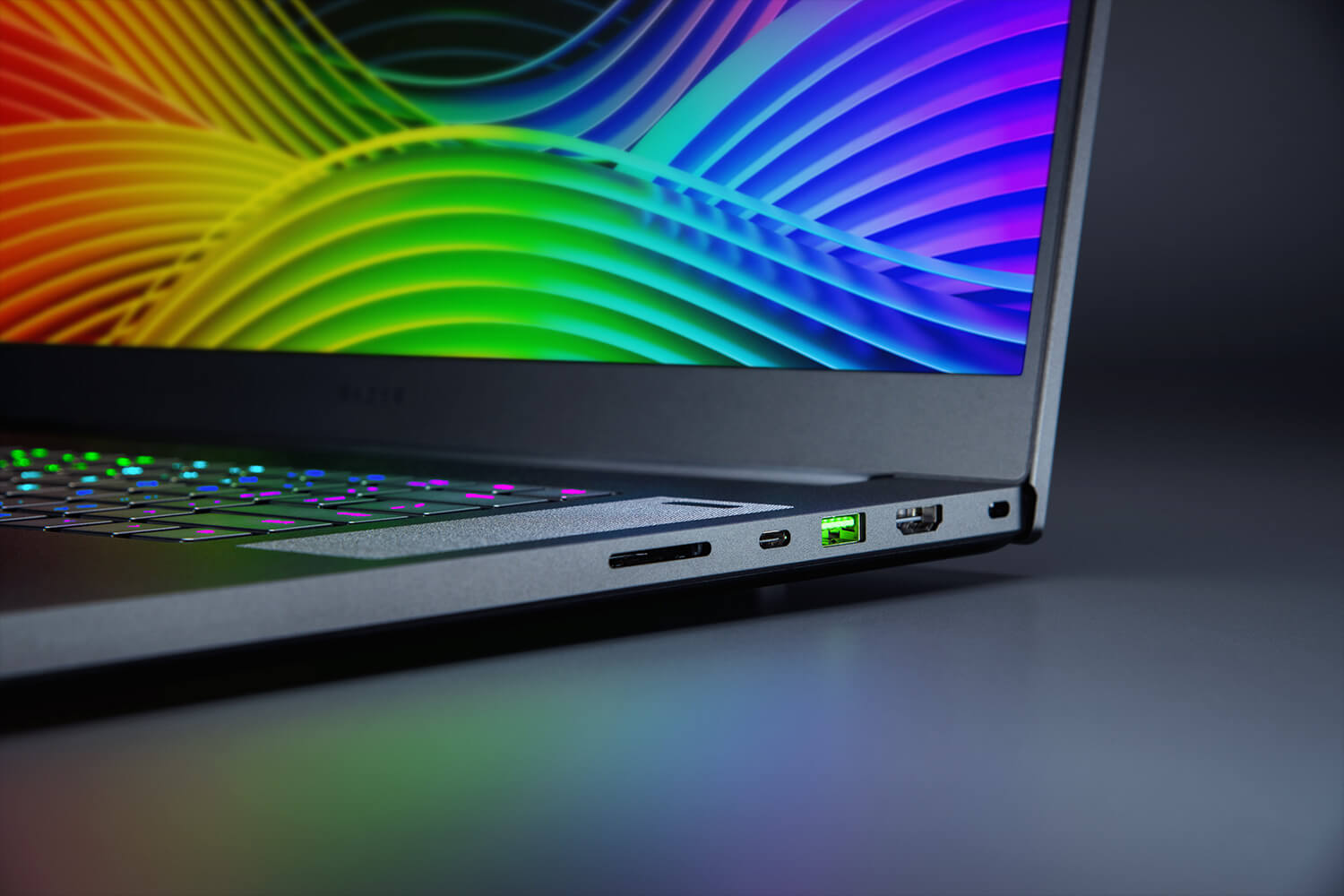
The headline here is shared by the graphics card, a Max-Q variant of Nvidia's mobile RTX 2080, and the processor, a 9th-gen Intel Core i7-9750H.
Max-Q is Nvidia's slimline card design, suited to machines with limited case space. This does come with the drawback of lower clock speeds, with the 2080 here running at a boost speed of 1,230MHz – far lower than the 1,590MHz speed available to chunkier laptops, itself slower than the desktop-class max of around 1,800MHz.
Get all the latest news, reviews, deals and buying guides on gorgeous tech, home and active products from the T3 experts
Does that mean you shouldn't expect desktop performance? Well, yes, to a certain extent, because the numbers don't lie. But that's not the point: as we'll come to, the Blade Pro 17, even clocked down from its hardware's theoretical limits, pulls off the best performance possible for a machine of its size.
That's partly down to the graphics card, and partly due to that six-core processor, which shone through our benchmark tests. As a combo, they work perfectly in tandem, and we'd have to give credit to that cooling system for keeping them running at full tilt for as long as possible.
Razer Blade Pro 17 (2019) benchmarks
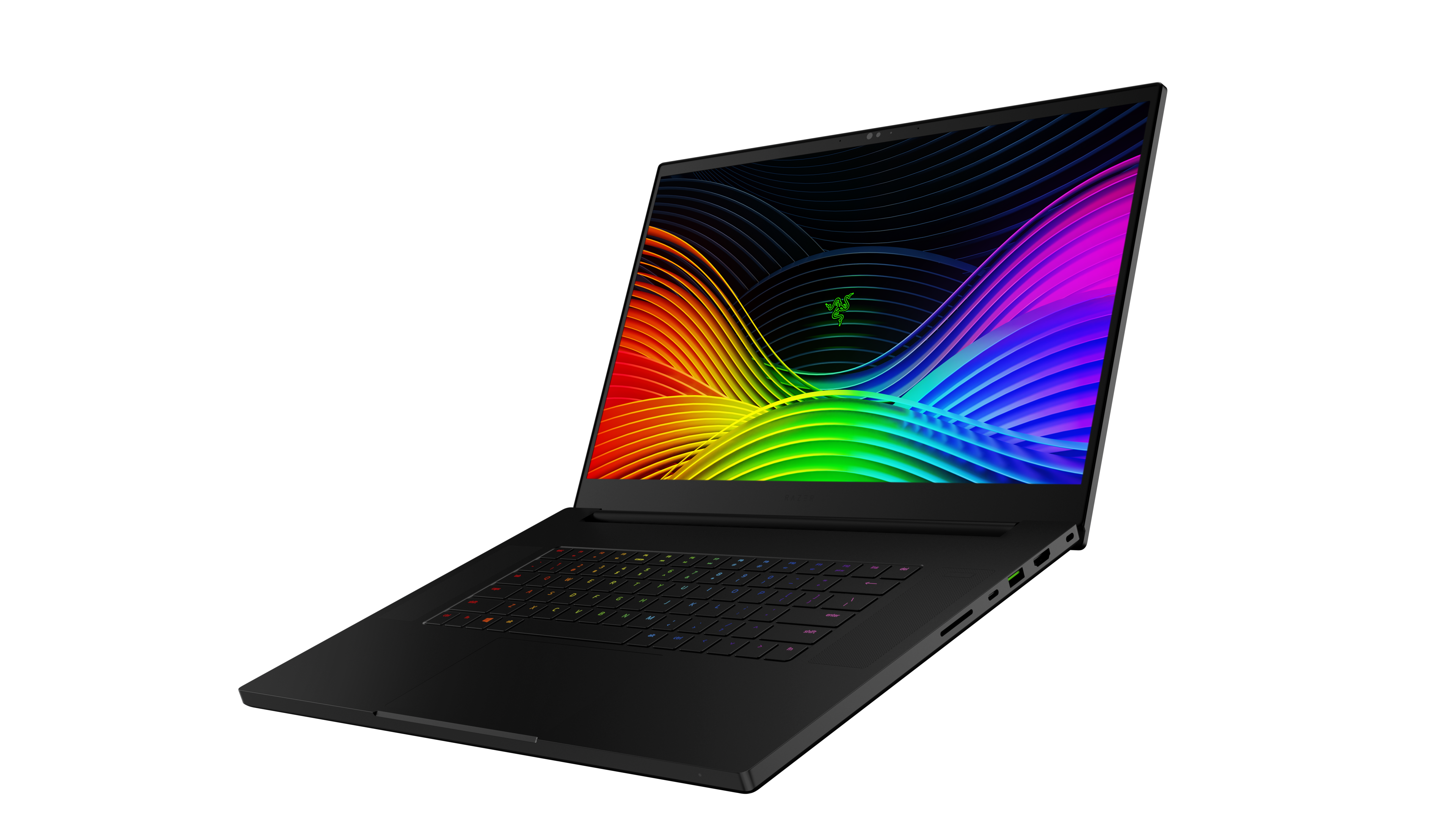
Cinebench R15 Multi (Index): 922
CrystalDiskMark QD32 Sequential Read (MB/s): 3228
CrystalDiskMark QD32 Sequential Write (MB/s): 1969
3Dmark: FireStrike: 17,244
Rise of the Tomb Raider (fps): 113
Total War: Warhammer II (fps): 80
Tom Clancy's Ghost Recon: Wildlands (fps): 62
On paper, the screen might seem disappointing: it's a 1080p IPS panel, in a world where lesser Blades (and even the Blade Pro's predecessor) can be specced to support 4K displays. Contextually, though, straight FHD is probably the right choice: if you're looking to drive maximum performance from high-end games, keeping the resolution lower means far higher frame rates. The panel here runs at 144Hz with a quoted 3ms refresh rate, so higher frame rates really make a difference – and Razer states it covers the full sRGB colour gamut. We weren't able to test this specifically, but we believe it. It's a screen with a massive amount of pop to it, good viewing angles, and slimline bezels. No complaints.
The Blade Pro's ports are entirely located on its sides, towards the rear of the base, and in terms of connectivity it's entirely fine – it's not bursting with potential connectors, but there's more than enough to work with either in a gaming or working context. There's an SD card reader that supports UHS-III, both a 4-lane PCIe Thunderbolt 3 port and a USB-C 3.2 port, three USB 3.2 Gen 2 ports spread between each side, an HDMI 2.0B output, 2.5 gigabit Ethernet, and a combo headphone jack.
Storage comes courtesy of a 512GB M.2 SSD, which is adequate, and it (like the Blade Pro's 16GB RAM) is user-upgradeable, which is a neat touch that's all too rare in premium laptops. There's also 802.11ax Wi-fi in there, so you'll be ready to get the highest possible ping.
Razer Blade Pro 17 review: Gaming and performance
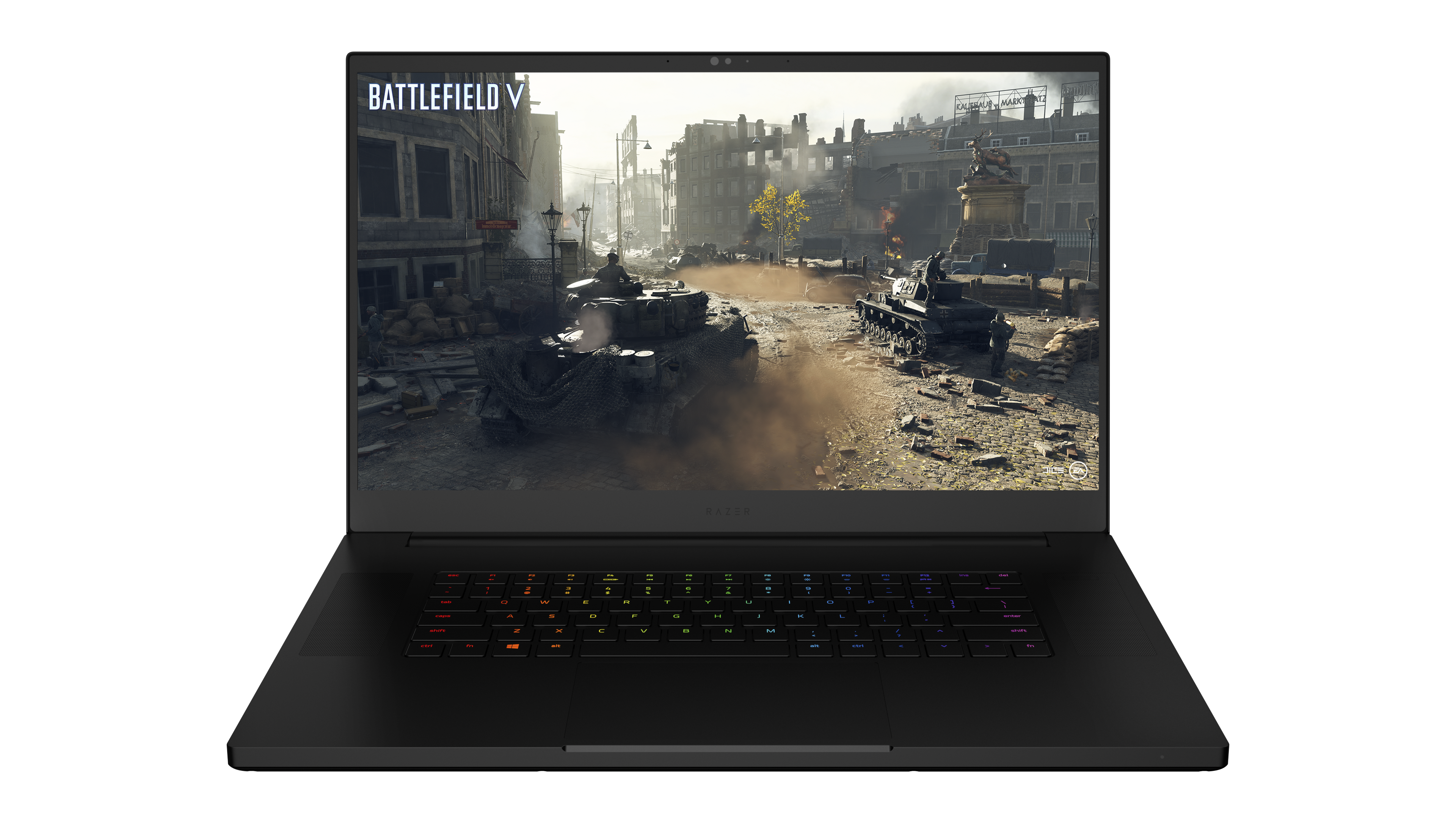
We used and thoroughly abused the Blade Pro. With an RTX 2080 in front of you, that's a fairly natural course of action – and it never once let us down. Grinding through the streets of GTA 5 with everything dialed up to full, it kept a frame rate that hovered around 90fps, and felt utterly slick. Admittedly that's a slightly older game, but it's one that was built originally for consoles meaning its PC optimisation isn't so hot – this hardware setup absolutely destroyed it.
More modern titles like Ghost Recon: Wildlands were equally impressive, and its benchmark results were, next to the same tests performed on the Zephyrus S GX701, infinitesimally better. You do, as we've mentioned, have to put up with a little noise – or a lot of noise, if you're really pushing it – but this is far from the wind tunnel experience of last-gen laptops, and the top of the case barely gets hot at all. It seems next to impossible to bring the Blade Pro to the point of noticeable thermal throttling; we're sure there was some happening, but the overheads afforded to performance by the top-line components make the difference imperceptible.

Razer Blade Pro 17 (2019) Image Gallery
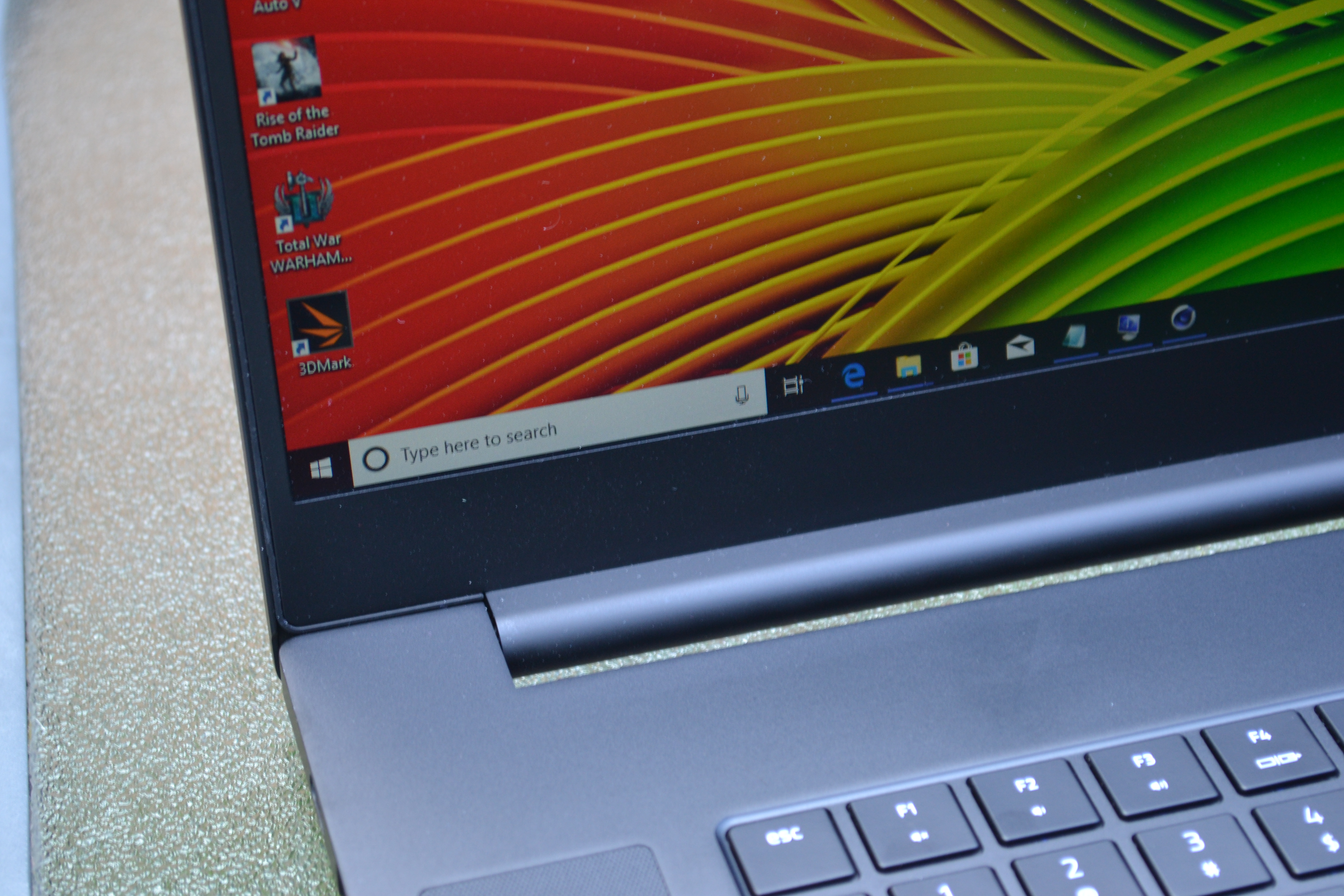
Razer Blade Pro 17 (2019) Image Gallery
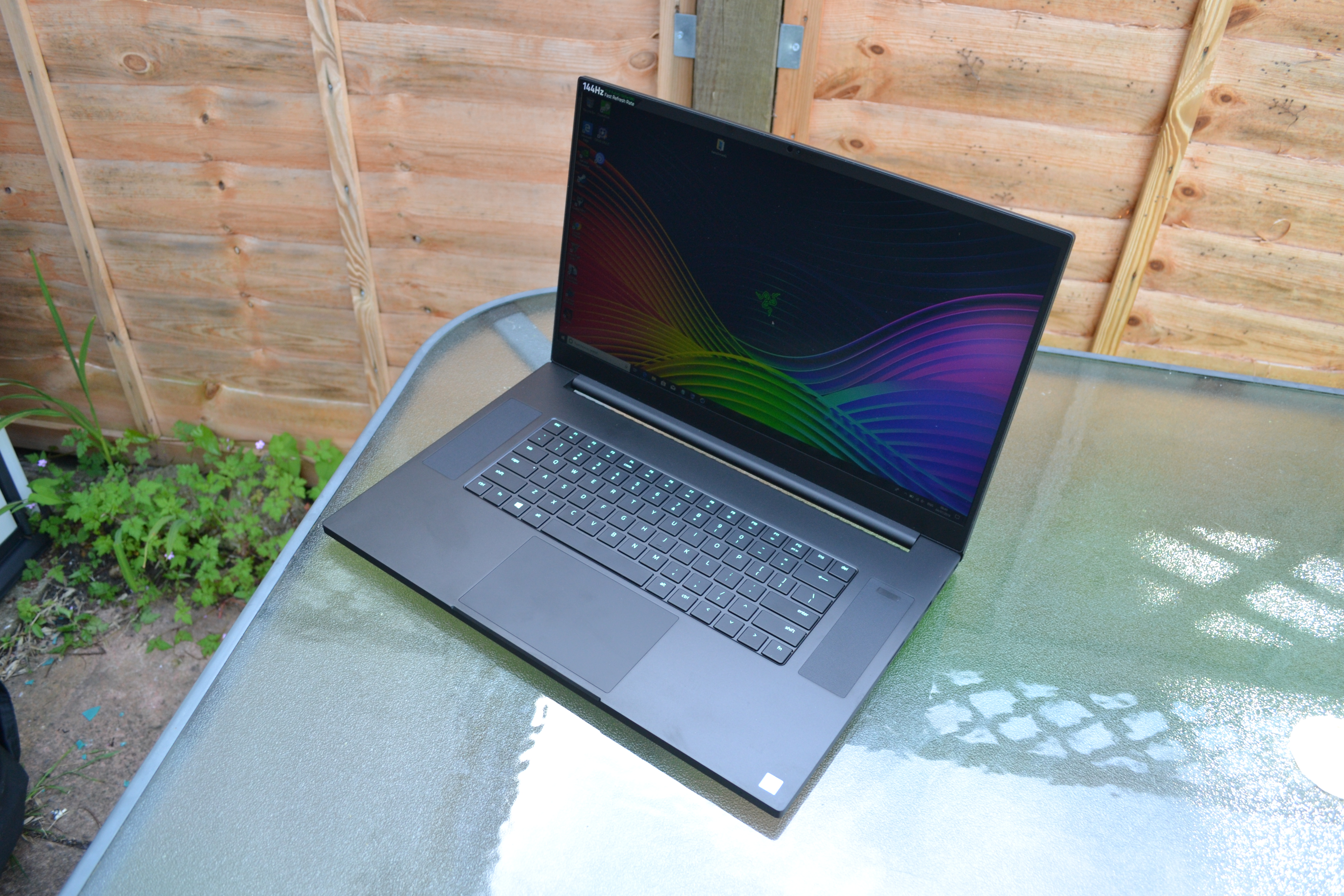
Razer Blade Pro 17 (2019) Image Gallery
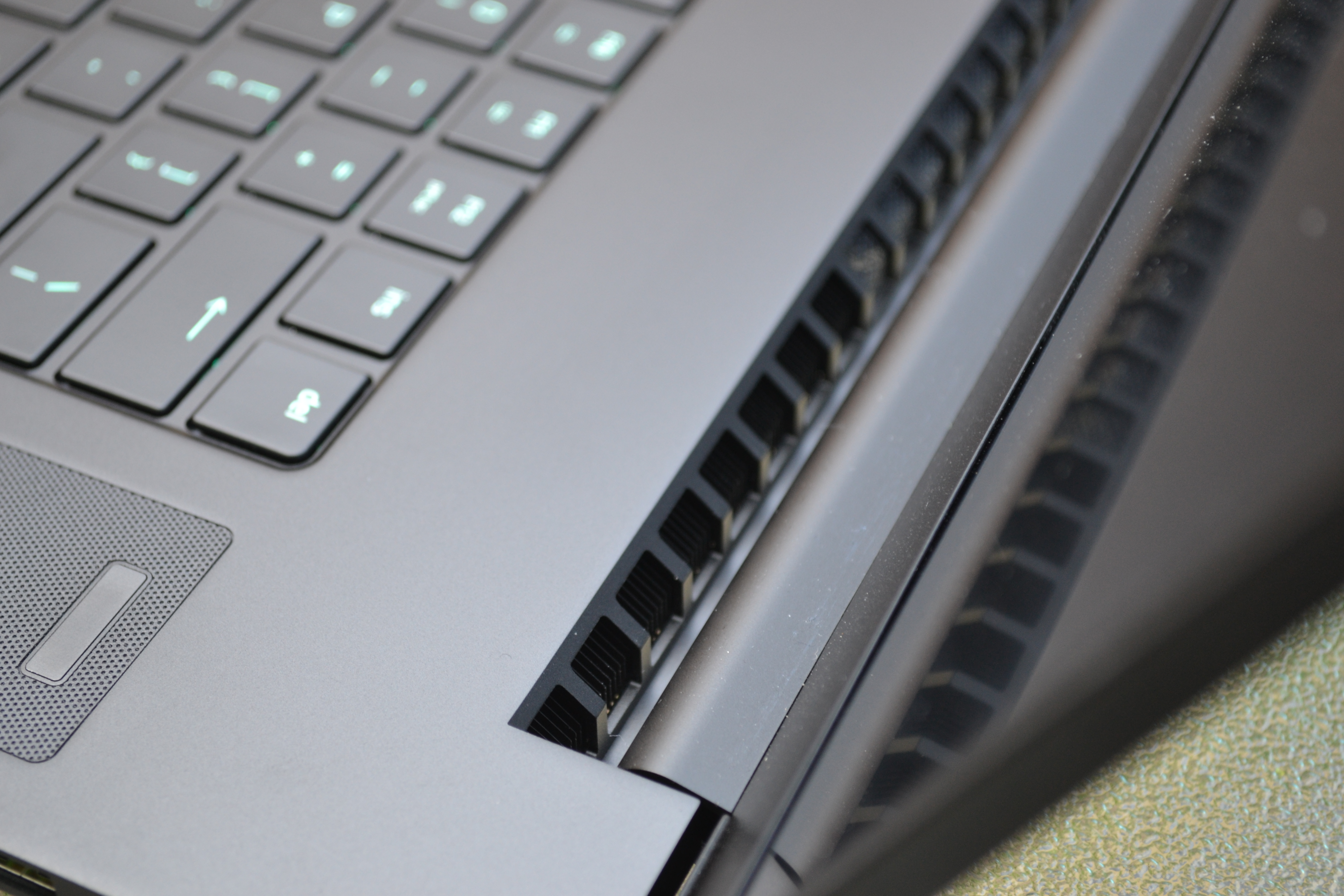
Razer Blade Pro 17 (2019) Image Gallery
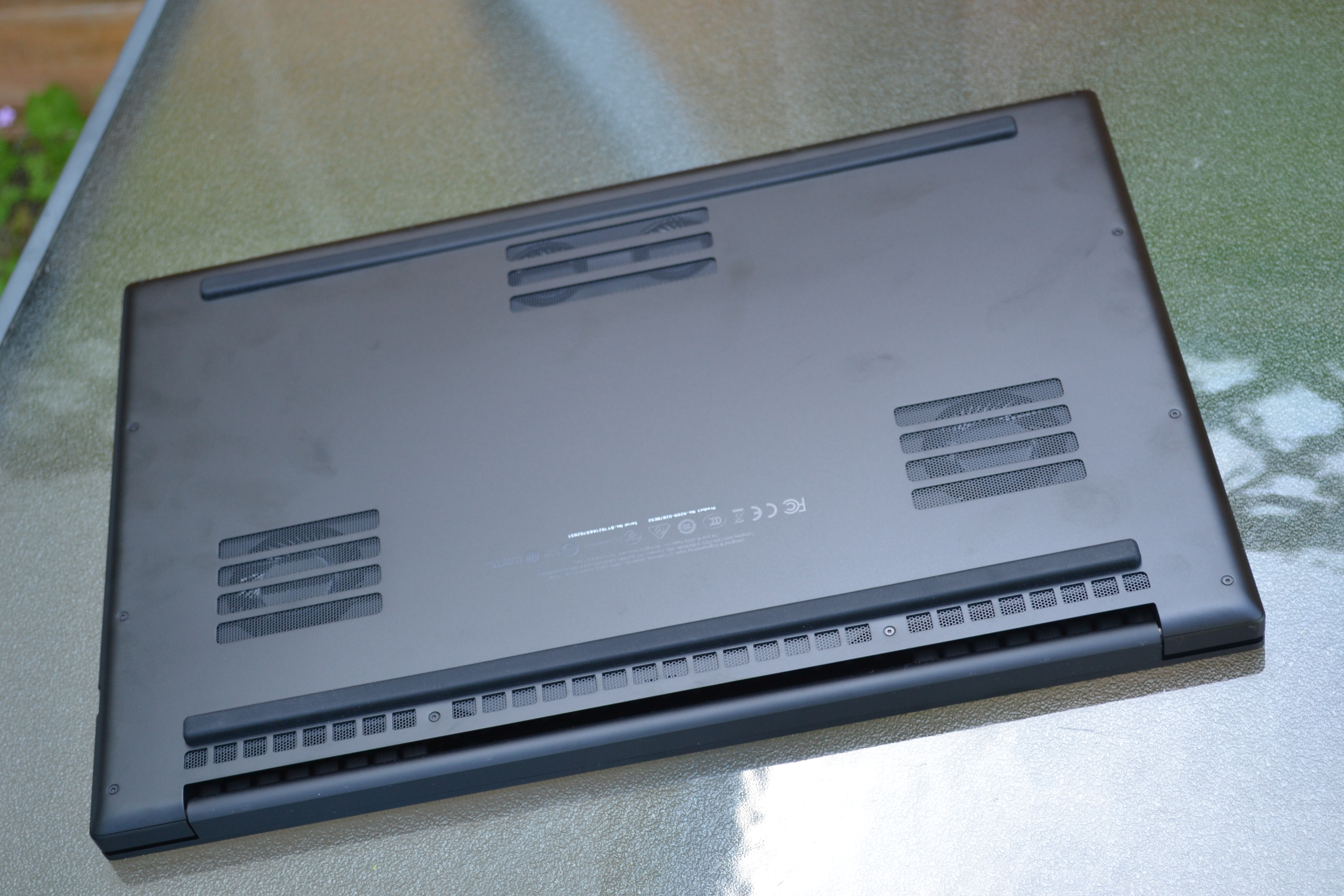
Razer Blade Pro 17 (2019) Image Gallery
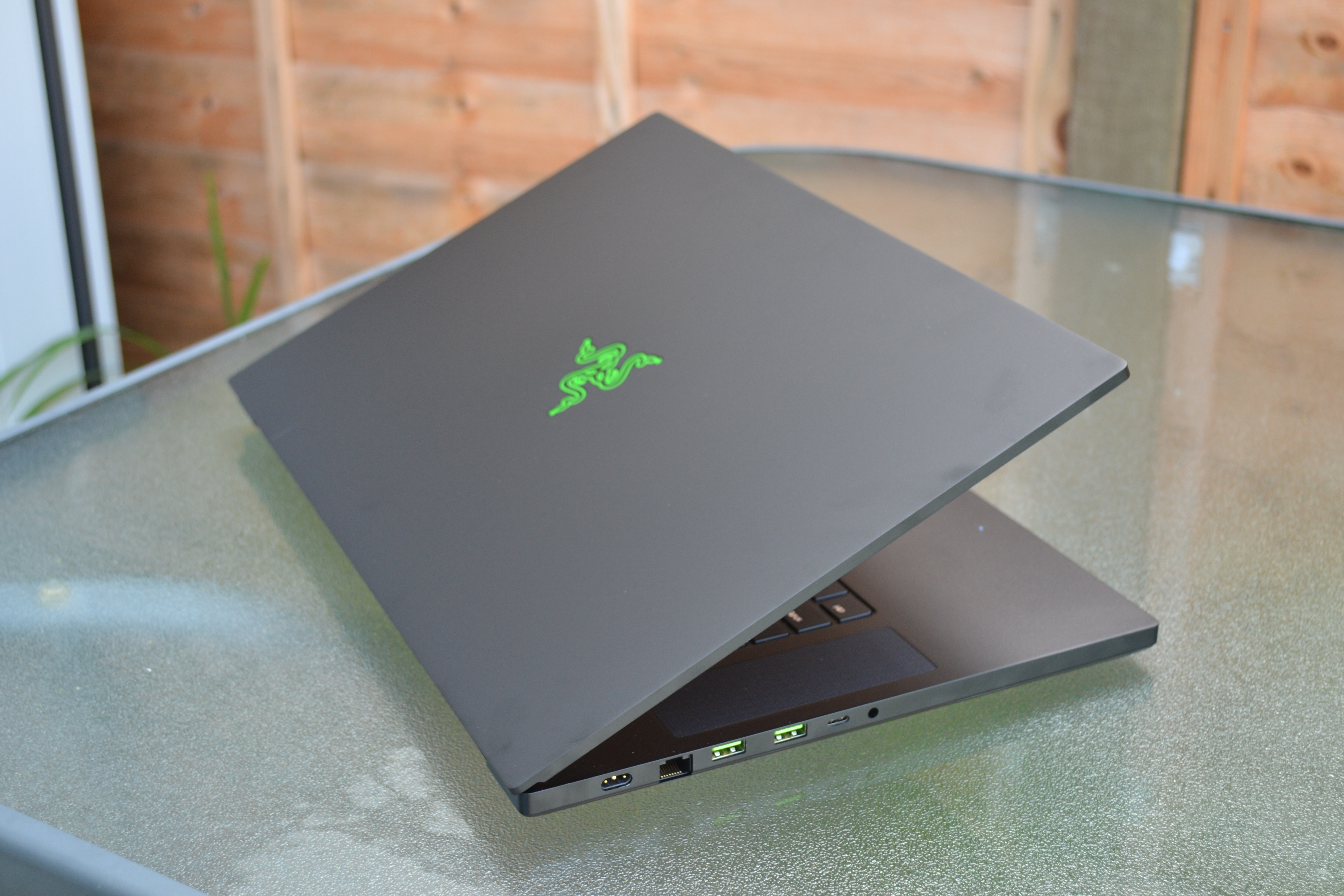
Razer Blade Pro 17 (2019) Image Gallery
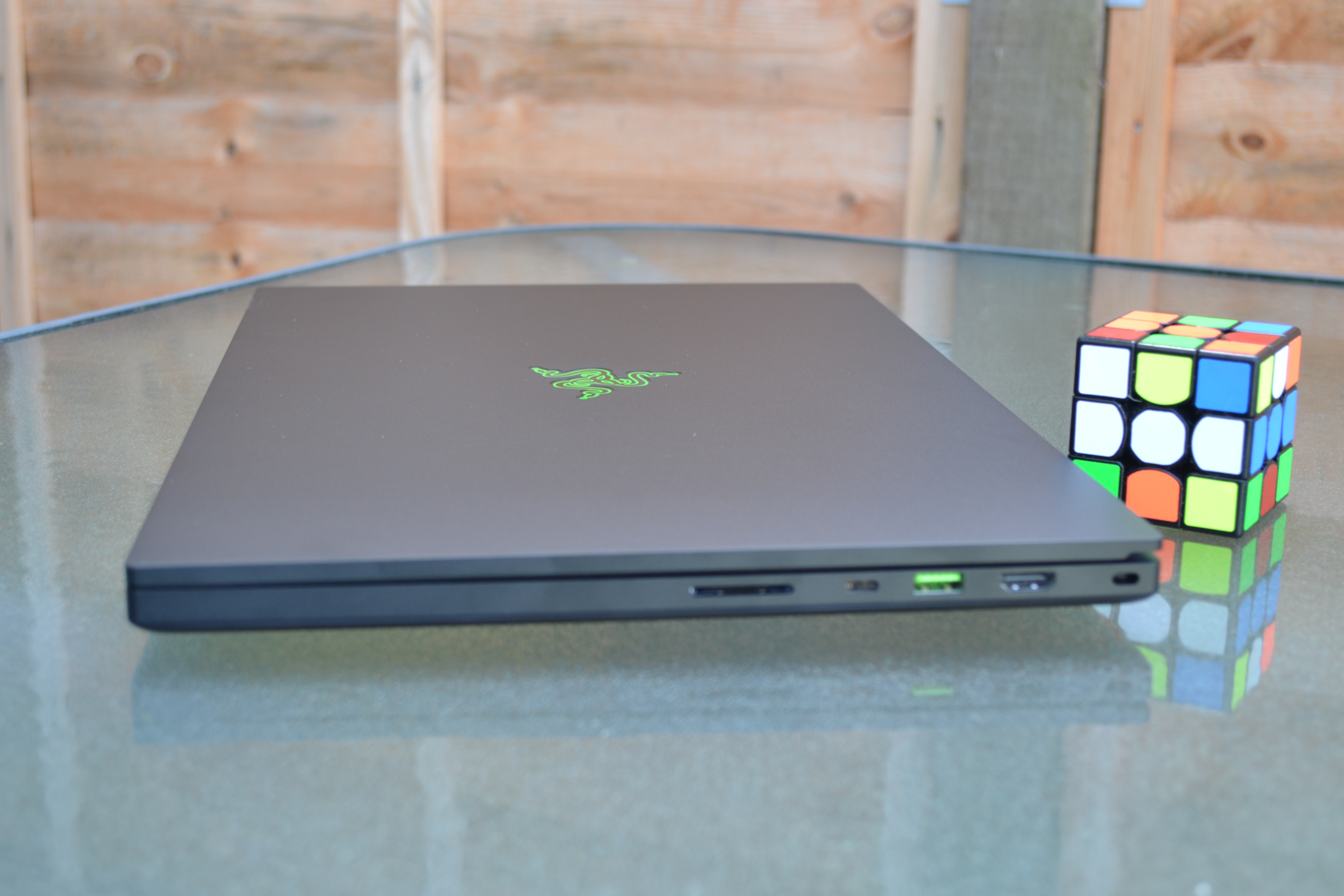
Razer Blade Pro 17 (2019) Image Gallery

Razer Blade Pro 17 (2019) Image Gallery
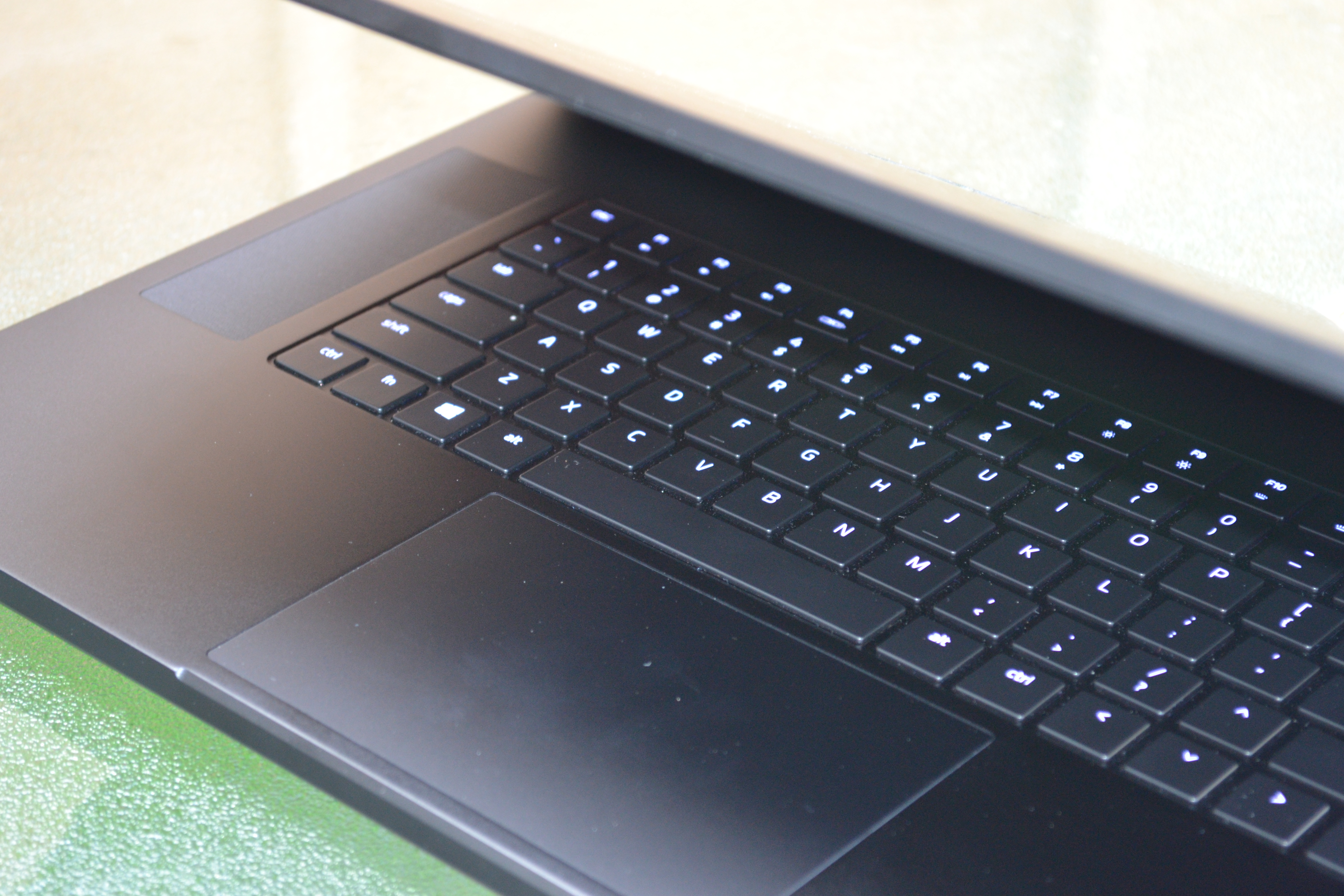
Razer Blade Pro 17 (2019) Image Gallery

Razer Blade Pro 17 (2019) Image Gallery
One point of interest, though – while it was functionally OK for work, we weren't super-fond of using the Blade Pro's keyboard for gaming. Whipping out a gamepad or an external keyboard means you'll have a lot more fun, and you'll obviously need a secondary mouse if you want to do things properly. Oh, and the battery? Well, there's a battery in there, but don't expect to game on it. It lasts a lot longer when the system is using the integrated graphics option as opposed to the RTX 2080, but even then you'll want to keep one eye on the nearest power outlet.
Razer Blade Pro 17 review: Verdict

The 2019 take of Blade Pro is just brilliant. It's brilliantly designed, it's brilliantly beefy while remaining slim and light enough, it's brilliantly bright and colourful, and we have no hesitation in awarding it a full five stars. There's nothing outright disappointing, and any teensy flaws are eminently ignorable.
But we do need to loop back around to the start of this review: this is not a cheap laptop, and there are much more affordable machines out there that can come at least close to its performance. Even the GX701, its biggest rival, beats it on price if not quite on benchmark numbers.
The Blade Pro is an edge case, an example of what's possible if you spend enough – will it be your next laptop? Probably not. And in six months, in a year, will we look back at it and still think it's quite so brilliant? Again, probably not – it's PC hardware, and that never stays still. Asus will be nipping at its heels and perhaps even sinking its teeth in with the next Zephyrus. Right now, though? Man, this is a superb machine.

T3 magazine's own Gadget Guru is a 25-year veteran of the tech writing wars, and has the scars to prove it. He's written for the UK's biggest technology publications, and knows everything from smart doorbell voltage needs to how to bend Windows to his every whim.
